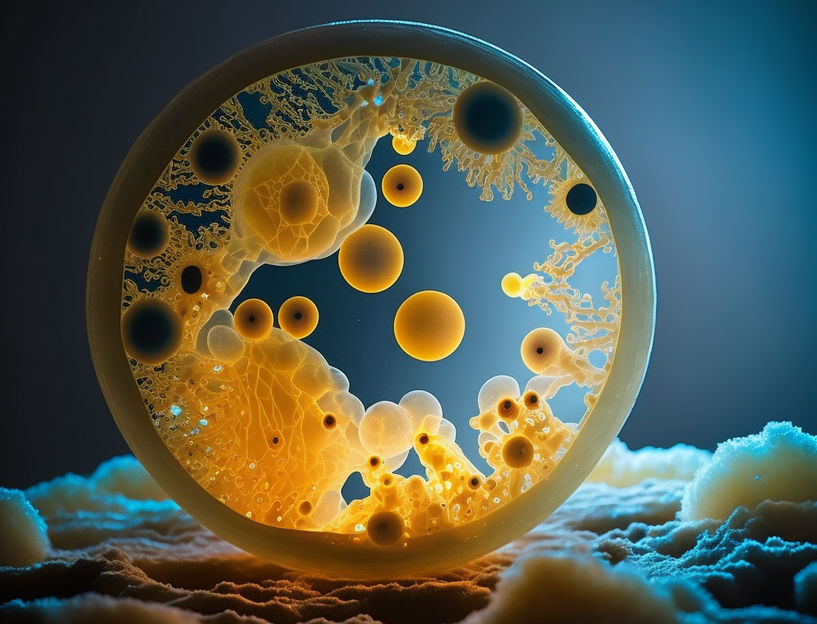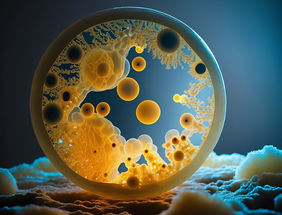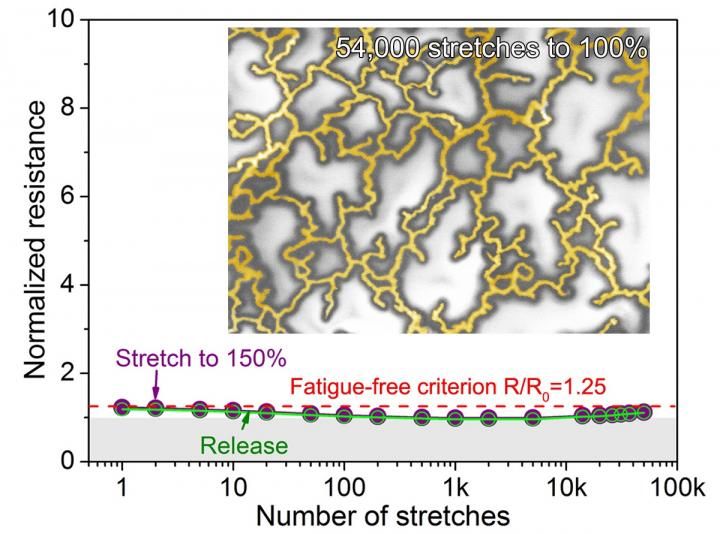Symbiotic CO₂ Sequestration
Bioengineered microbial community working together to store carbon
photosynthesis is a valuable natural system for sequestering carbon dioxide. However, simply forming biomass does not fully exploit this system. A Chinese team of researchers, whose study is published in the journal Angewandte Chemie, has now genetically engineered a microbial community which could serve as a living carbon sink. In this community, carbon dioxide is first converted into sugar by photosynthesis, then the sugar is converted into useful chemicals.

Computer-generated image

© Wiley-VCH


Various bacterial strains are used in biotechnology to produce specific chemicals. For example, some genetically modified strains produce lactic acid, which in turn is used to produce the biodegradable plastic, polylactic acid (PLA). Other strains are used to enrich precursors for biofuels or pharmaceuticals. However, because the bacteria require energy and nutrients, bacterial production of chemicals is often inefficient.
In contrast, phototrophic organisms naturally produce sugar from carbon dioxide, water, and sunlight. In a symbiotic community, therefore, chemical-producing bacteria could theoretically use this sugar as food, thus making them a potential carbon sink and simultaneously producing useful chemicals. However, many photoautotrophic organisms produce sucrose as their stored sugar, the exact sugar which bioengineered bacteria struggle to consume and utilize.
With this in mind, the research group of Jun Ni at Shanghai Jiao Tong University in Shanghai (China) carried out a systematic search for candidate bacterial strains that could be bioengineered but which could also grow naturally on sucrose. They found what they were looking for in a marine bacterium known as Vibrio natriegens: “Luckily, V. natriegens naturally harbors the complete sucrose transport and metabolism pathway,” reveal the authors. In addition, V. natriegens can be genetically manipulated and tolerates salt stress. This is important because salt stimulates photosynthetic cyanobacteria to produce sucrose, thereby creating mutually reinforcing processes.
The research team then used this knowledge to produce an integrated modular system for CO2 sequestration from V. natriegens and the known cyanobacterium Synechococcus elongatus. They improved sugar production in the cyanobacteria using genetic engineering, as well as adding genes to V. natriegens, which increased sugar uptake and conversion into chemicals. In an unexpectedly efficient process, the team observed that the cyanobacteria may package up the nutrients in vesicles which were then excreted. The marine bacteria were then readily able to ingest these vesicles.
The team produced four variants of V. natriegens in order to produce either lactic acid, butanediol for biofuel synthesis, or coumarin and melanin as precursors for chemicals and pharmaceuticals. The bacteria, in symbiosis with the cyanobacteria, produced the chemicals with a negative carbon balance. “This system could absorb more than 20 tons of carbon dioxide per ton of product,” the team report. The authors consider their results to be proof that symbiotic microbial communities can be used as effective carbon sinks.
Original publication
Other news from the department science
Most read news
More news from our other portals
See the theme worlds for related content
Topic world Synthesis
Chemical synthesis is at the heart of modern chemistry and enables the targeted production of molecules with specific properties. By combining starting materials in defined reaction conditions, chemists can create a wide range of compounds, from simple molecules to complex active ingredients.

Topic world Synthesis
Chemical synthesis is at the heart of modern chemistry and enables the targeted production of molecules with specific properties. By combining starting materials in defined reaction conditions, chemists can create a wide range of compounds, from simple molecules to complex active ingredients.






























































